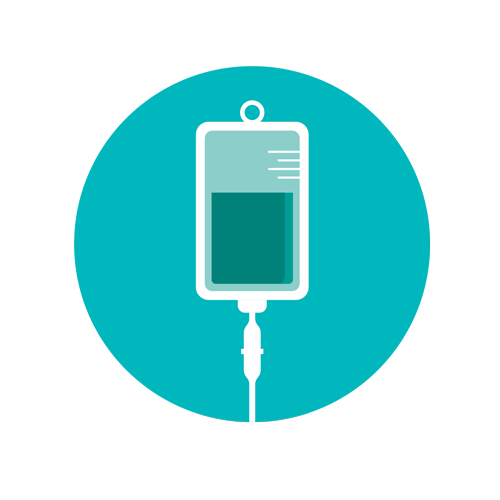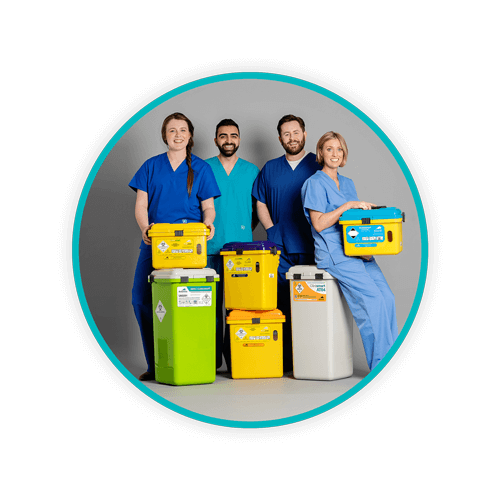Effects of Clinical Waste on People and the Environment

The negative effects of non-compliant clinical of infectious waste have long-lasting ramifications for both humans and the environment. Such dangers are not merely limited to chemical and toxic exposures caused by cytotoxic or liquid wastes. Medical providers should always consider duty of care to prevent harm to people and the environment. Biomedical waste is defined as any type of waste created during a diagnostic process, the treatment of a condition or disease, or immunizations of humans or animals. It also includes any research activities or processes that involve biological testing. At the very root of its definition, biomedical waste contains potential hazards that endanger humans.
Talk to us about improving your sustainability
The same is true for dangers to the environment.
Infectious properties found in syringes delivering medications or cytotoxic therapies might prove dangerous to anyone inadvertently coming into contact with them – via needlestick injury or cuts. Other types of clinical waste might be found in bedding, bandages, or clothing contaminated with blood or bodily fluids of a person infected with an infectious or communicable disease.
Trash that comes from any healthcare facility has the potential to increase risk of contamination to the environment; land, air, or water. The negative impact of clinical waste on the environment should be the concern of every employee in every healthcare facility, regardless of size or location.
TOPICS WE WILL COVER:
1 / Waste Segregation Vital to Protect Humans and the Environment
2 / How does Hospital and Clinical Waste Impact the Environment?
3 / Focus on Decreasing Environmental Impact of Medical Waste
4 / Sharpsmart Promotes Safety for Humans and the Environment
Waste Segregation Vital to Protect Humans and the Environment
Identification of clinical waste is the first step toward proper waste segregation. Clinical waste is typically divided by type:
- Sharps Waste
- Blood products
- Any type of waste contaminated with potentially infectious human blood, body fluids, or blood components
- Pathological waste
- Offensive Waste
- Cytotoxic waste
- Infectious waste
- Carcasses
Healthcare facilities and providers who generate biomedical waste need to manage it properly and have a clinical waste management plan in place. Some facilities (based on volume of healthcare waste generated on a monthly basis) are encouraged to implement on-site hazardous waste management practices whenever possible and applicable.
If clinical waste is not properly handled, dangers to the environment are not only possible, but likely.
How does Clinical Waste Impact the Environment?
Improper segregation of clinical waste or other medical waste streams from the point of origin has the potential to trigger a domino-like effect on the environment that incurs dangers to people, animals, or soil and water sources.
Improper segregation and disposal of biomedical waste that contaminates groundwater sources in turn may infect humans and animals alike. A hospital or medical centre must take special care to ensure that on-site biomedical waste is properly contained to keep it away from birds, rodents, and stray animals (as well as humans). Proper storage, packaging and labelling of contaminants helps to prevent the spread of illness through human and animal populations – by air, land, or water.
If not properly contained, segregated, and incinerated or rendered non-infectious through on-site or off-site incineration, environmental hazards associated with improper dumping into landfills increased the risk of contamination to soil, groundwater, and the very air we breathe.
Radioactive particles generated from diagnostic technologies or laboratories can leach into the air. Air pollutants disseminated over huge areas of inhabited land over time can cause a number of illnesses. Members of the public exploring trash receptacles or landfills can come into contact with improperly disposed of biohazardous wastes. Contact might contribute to:
- Lung infections
- Parasitic infections
- Skin infections
- Spread of viral illnesses such as HIV, Hepatitis B and C
- Bacteremia
- Cholera
- Tuberculosis
Needlestick injury and sharps injury incidents increase risk to caregivers and healthcare facility employees on a daily basis. Risk of contamination by HIV, hepatitis B and C pathogens are of primary concern to healthcare workers inside healthcare facilities.
Focus on Decreasing Environmental Impact of Hospital Waste
The bulk of clinical, offensive and/or infectious medical waste is dealt with via on-site autoclaving or incineration. Regulations have tightened. In recent years, criminal investigations by the Environment Agency in England have tackled improper disposal of medical waste. These are not wasted efforts.
As of 2017, 5.3 million tonnes of hazardous waste was collected in England, with 23% treated, 6% incinerated, and 14% sent to landfills following processes to make that waste inert. Throughout England over 9,000 sites have been approved to deal with waste. Between 2000 and 2017, hazardous waste deposits into landfills have steadily and drastically declined.
In the UK, growing numbers of healthcare centres, dental offices, veterinary facilities, and laboratories seek and contract with incineration services that rely on the latest technologies to not only properly and effectively destroy biomedical waste, but those that also operate with reduced emissions and resulting health hazards for the general public and the environment. This is achieved through advanced designs in flue gas abatement that removes nitrogen oxide, neutralizes acid gases, and improves filtration of particulates.
The Department of Health’s Health Technical Memorandum (07-01: Safe management of healthcare waste) makes clear a number of environmental and waste legislation directives applicable to proper management of healthcare waste, as does the EU Waste Framework Directive, setting proper requirements for collecting, transporting, recovering, and disposing of waste.
No excuses! Clinical waste responsibilities and regulations are clearly spelled out in the memorandum and are essential in correctly identifying waste streams to ensure that not only is clinical waste properly handled and collected, but that waste carriers and waste transfer stations also abide by the rules.
Infectious waste is banned from landfills unless it has been pre-treated to render it non-infectious and suitable for landfill disposal. The overall goal of regulations is to decrease the volume of medical waste of any kind ending up in landfills.
Reusable containers such as those developed by Sharpsmart are not only growing more popular, but are recommended, as is sharps injury reduction through proper sharps container placement.
Every healthcare waste generator is responsible for management of hazardous waste. As such, Sharpsmart encourages training to promote proper segregation of all clinical waste streams.
Sharpsmart Promotes Safety for Humans and the Environment
Sharpsmart is dedicated to increasing sustainability and developing green solutions for medical waste management. Even small steps can help the environment, reduce CO2 carbon emissions and greenhouse gases from being released into the air we breathe. In one facility alone, Sharpsmart solutions reduced volume of medical waste heading to a landfill by 14.3 tonnes in one year. For more information about Sharpsmart solutions, resources, and products that will help you do your part to protect people and the environment, contact us today.
Let's Talk!
Your time is valuable, and we don’t want to play hard to get. You can either phone us directly on the details listed on our contact page, or feel free to fill out this short form and one of our team members will get back to you as quickly as possible.

